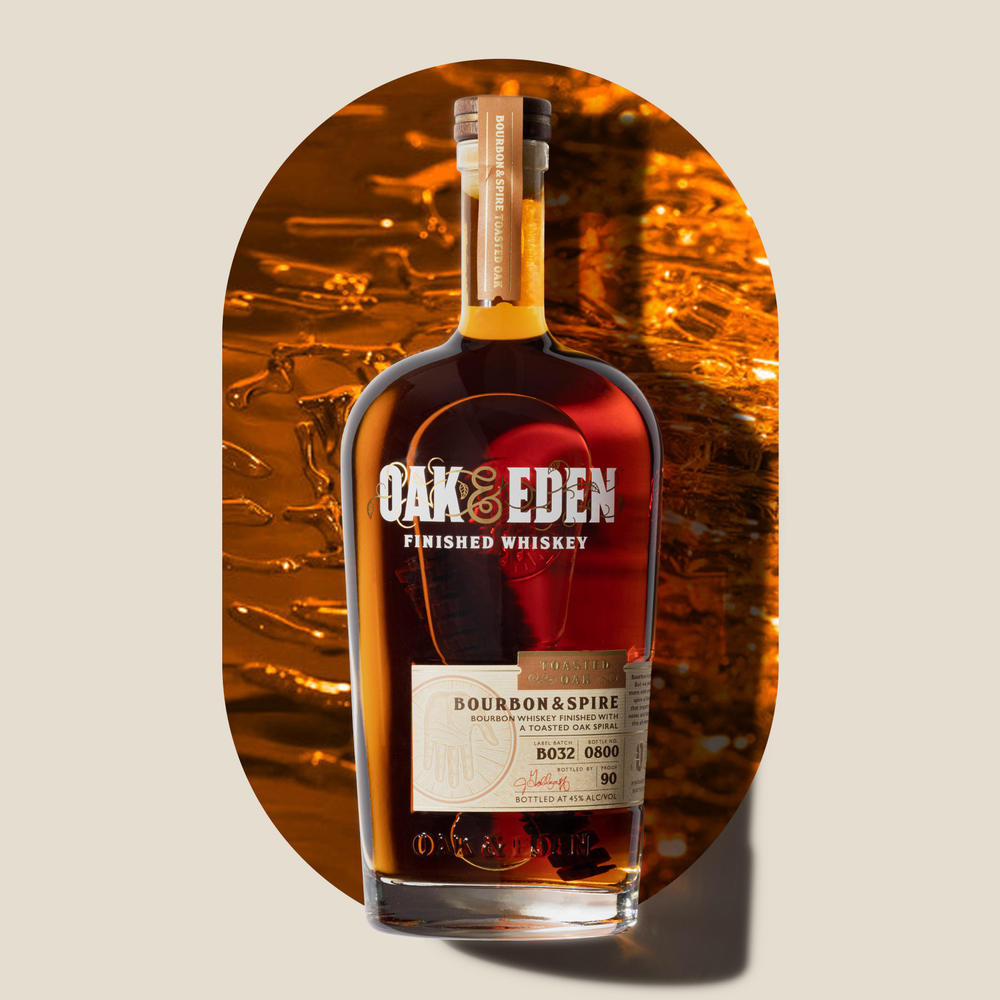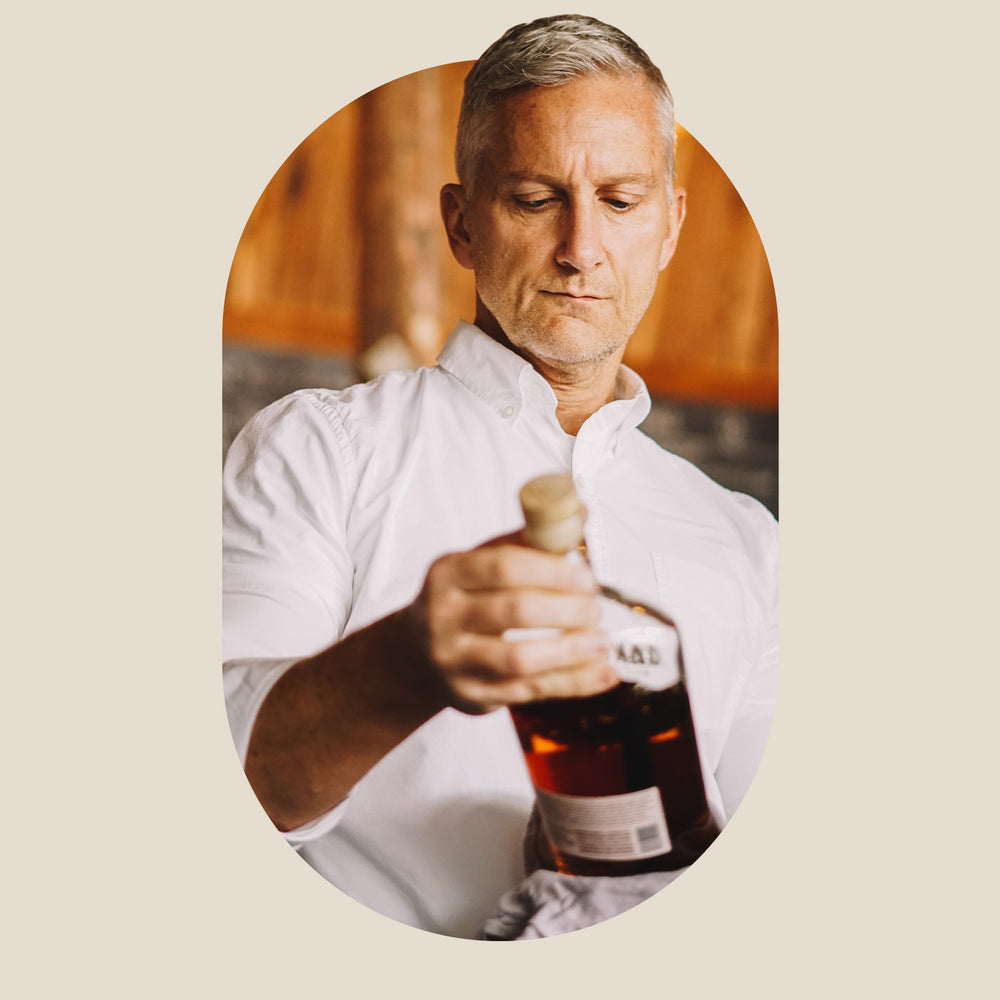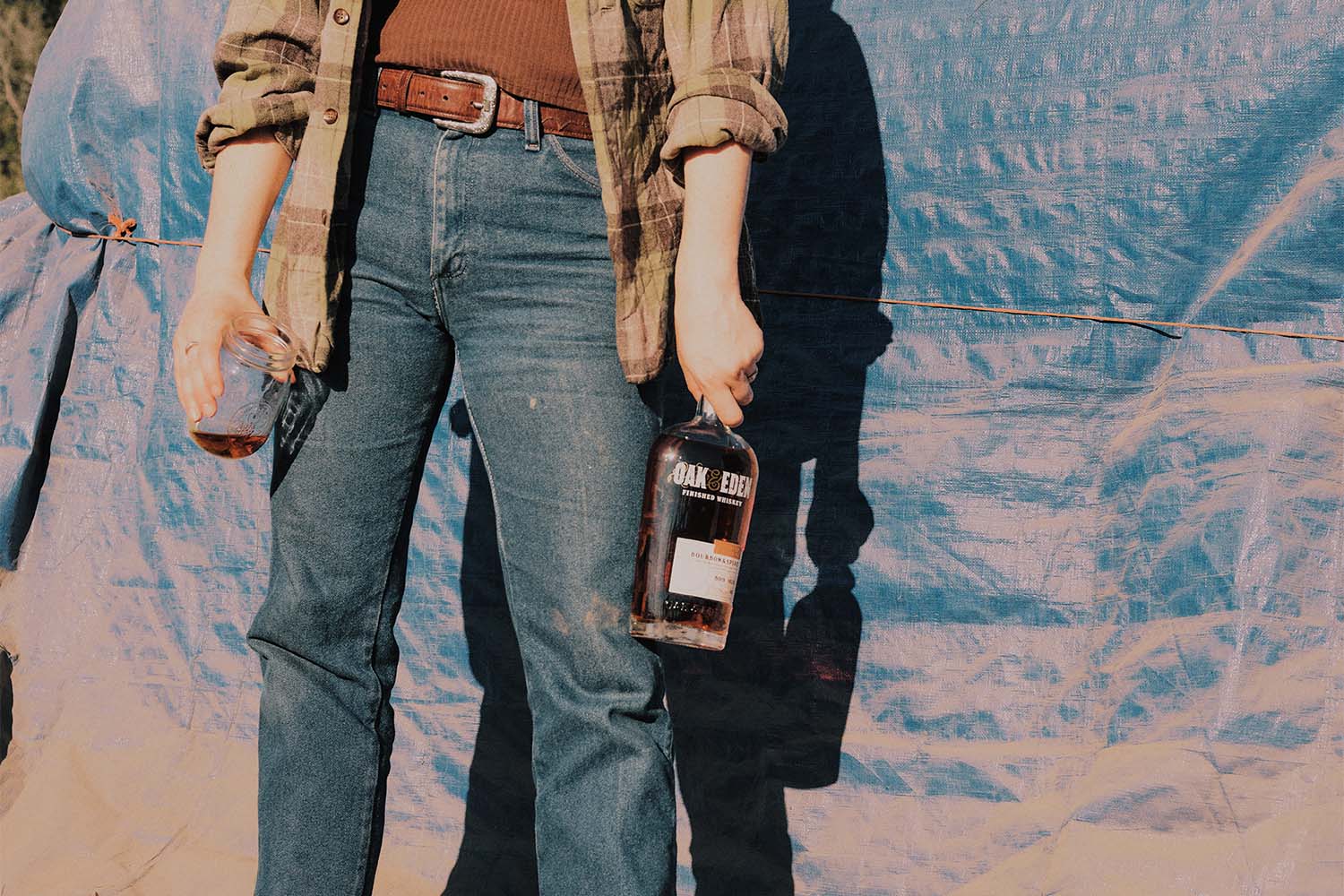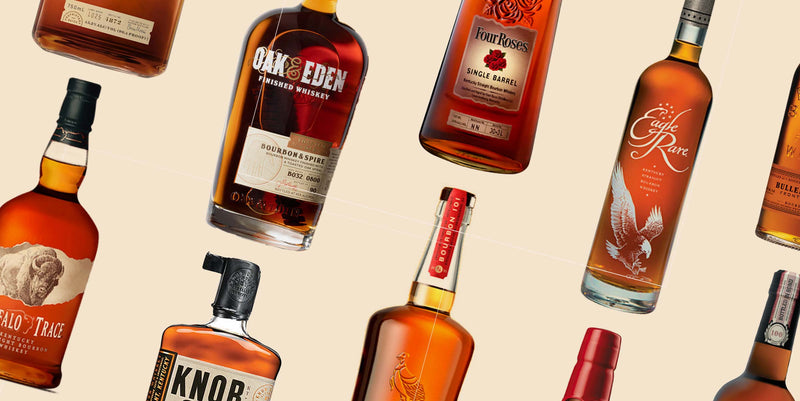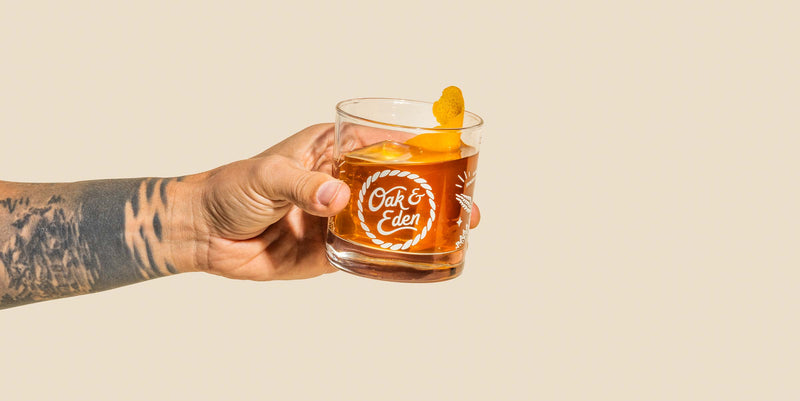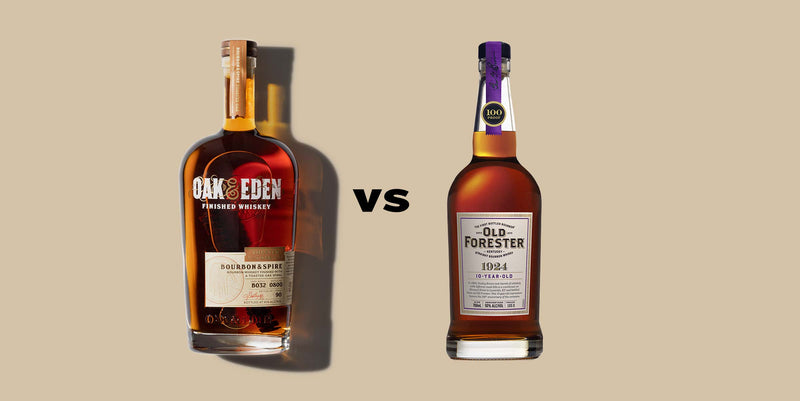There are many elements that go into crafting a delicious whiskey.
Every great whiskey starts with a unique mash bill: the grains that are fermented to start the whiskey-making process by turning sugars into alcohol. From wheat to corn, barley, and malt, each whiskey has its own specific blend and grains sourced from unique locations granting their flavors to the blend.
Then, there are the fermentation and distillation processes, both of which create and increase the alcohol content of the liquor. A distiller's skill is showcased here in their ability to create a smooth and clean product from the distillation of alcohol. Aging spirits is an art form, whether it’s tequila, Irish whiskey, or bourbon coming out of the distillery.
Of course, there is still much left to be added to the whiskey. Specifically, there’s one final step that practically every single whiskey goes through: aging. Not only is the age of a whiskey important, but how whiskey is aged impacts the quality, flavor, and depth that a bottle achieves.
The aging process is a complicated part of whiskey-making that is absolutely critical for a rich and complex spirit. Here’s a brief guide to help you understand everything that you need to know about the whiskey aging process and how it impacts your drink.
What Does Barrel Aging Do To Whiskey?
Let’s start by tackling what is probably your biggest question: what aging actually does to a whiskey. While there are many facets of a whiskey that impact its flavor, by far the most important one is the aging process. This starts with American White Oak wood staves, which help to give the whiskey its distinct bitter flavor.
When a whiskey reaches maturity in American oak aging barrels, something truly magical takes place. As the whiskey sits in the barrels through the seasons, the temperature and humidity of the storage room will change, which causes the wood to expand and contract. This causes the wood to almost breathe the liquid as the surface area broadens. As the whiskey is breathed back out, some of the wood sugars, tannins, and vanillin compounds stay in the liquid, adding flavor and color.
The longer a whiskey is aged, the more flavors it can absorb from the wooden barrels it is placed in. The aging process is also responsible for all of the color that you get from a high-quality whiskey. When whiskey enters the barrel, it’s clear like any other neutral grain spirit. Through this aging process, the whiskey takes on the dark colors of the wood. The longer a whiskey is aged, the darker the color will be.
It is critical that whiskey be aged in wood, not metal. Metal does not impart flavor characteristics when you age alcohol in it. Many cheap wines are aged (briefly) in metal casks to keep them fruity and bright without dark woody flavors, but that’s not the norm for whiskey. Aging in wood adds flavor and depth, while aging in metal does not.
How Does Aging Work?
The heart of the aging process comes from the porousness of wood and temperature fluctuations.
When whiskey was first distilled and aged, there were no temperature-controlled aging rooms where they could control the climate for the aging of liquor and alcohol. Because of this, the temperature would invariably change from summer to winter and back year after year, causing the wood to expand and contract over time.
As the wood expands, it becomes more porous and allows the whiskey to enter the wood, where it mixes with the natural botanicals and elements of the wood. These botanicals and elements add flavor and color to the whiskey before it’s dispensed from a spigot or other dispenser.
During the cooler months when the wood contracts, the whiskey is pushed out of the wood along with some of the botanicals and colors, creating a darker, more flavorful product.
What Is Angel’s Share?
If you’re familiar with the whiskey-making process, then you may have heard of the inside term “angel’s share.” The angel’s share is a part of the whiskey-making process which has been acknowledged by whiskey makers since the drink’s earliest days.
As whiskey ages, it naturally loses some of its volume to evaporation. This means that the air in a room with whiskey barrels aging is more alcoholic than normal, giving the air a very nice smell. This does, however, mean that whiskey is lost over time due to oxidation.
Monks were among the first people to have written records of making and drinking whiskey. They called the portion of whiskey lost in aging the “angel’s share,” as it floated up to heaven as an offering in their logic. However, this whiskey was probably closer to moonshine than the whiskey of today.
The longer a whiskey is aged, the more is lost to the angel’s share. This is part of the reason why whiskey that is aged longer is more expensive — it takes more whiskey in the barrel to get the same amount out at the end.
Are There Requirements for Aging Whiskey?
Now that you know just how important aging is to a whiskey, you may wonder if there are certain requirements, limitations, and restrictions that your own whiskey must follow during its aging process. Yes, but it depends: different types of whiskey have their own specifications for aging requirements.
For instance, Bourbon whiskey has to be made and aged here in the United States, and it must be aged for a minimum of two years in new, charred American White Oak bourbon barrels. This is what gives bourbon its characteristic oaky, vanilla, and caramel nose. If you plan on making your own spirits using a small barrel, you’ll need to meet these standards for it to be considered bourbon.
Other whiskeys can be aged for much, much longer, like many Scotch and Irish whiskeys, which are regularly aged for decades before being bottled in the most expensive bottles. These handcrafted drinks are best enjoyed straight out of a decanter rather than used to create an aged cocktail.
The type of wood, size of the barrel, location where the barrels are stored for the aging process, level of care on the barrel, and previous uses of the barrel all impact the flavors that can be added and imparted to the whiskey in the barrel.
What Does a Whiskey Age Statement Mean?
When you look at a bottle of whiskey (or any bottle of liquor for that matter) and you see that its age advertised on the bottle, you may think that this means the liquid in the bottle is exactly that many years old. Well, this isn’t quite so: the age statement is only the age of the youngest whiskey included in the blend at the time it was bottled.
This means that if you have a fifteen-year aged bottle of whiskey from Scotland, you have a bottle of different whiskeys blended together of which the youngest whiskey was fifteen when it entered the bottle.
What Happens as a Bottle Ages?
Once the whiskey enters a bottle, you might hope that it continues to get better with age and improves over time just as it would in the barrel. However, once most whiskeys enter the bottle, the aging process is over and no additional flavors are added.
This isn’t the case with Oak & Eden Whiskey. Our whiskeys use an innovative new technology that turns the whiskey world on its head: in-bottle finishing. Every single bottle of Oak & Eden whiskey contains one of our Spires.
These Spires are expertly crafted spiral-cut wooden spires which are charred and selected specifically for each blend of our whiskey. These spirals add a finishing touch to our whiskey while it sits in the bottle waiting for you to drink. Each bottle of Oak & Eden gets a spire to add just a bit more depth and complexity that you can taste in every drop.
Takeaways
There are a lot of aspects of a great whiskey, but one of the most important is the aging process. How whiskey is aged is responsible for all of the color in a whiskey and many of the complex flavors as well.
The aging of a whiskey in American White Oak barrels works because of temperature variations over time. This causes the wood of the barrels to expand and contract, allowing whiskey in and out of the wood. This allows the whiskey to grab on to some of the colors and natural botanicals in the wood, which then stay with the liquid when it is pushed back out of the wood in the winter.
Different types of whiskey need to be aged for different lengths of time. For instance, bourbons have to be aged for a minimum of two years in new barrels, while other kinds of whiskey require different types of wood and different age requirements.
The age statement that you see on a bottle of whiskey when you buy it is actually only the age of the youngest barrel of whiskey included in the blend. This means if you have a five-year-old whiskey, it could contain whiskeys older than five years, but not any younger.
Once a whiskey enters the bottle, it is normally no longer able to age and mature. Oak & Eden whiskey uses state-of-the-art in-bottle finishing techniques that we innovated to add depth after bottling. These techniques also make our bottles phenomenal picks for father’s day gifts or groomsman gifts, as well as for toasting at your next special occasion.
Aging whiskey is a crucial step in the process. With this knowledge, you will better be able to enjoy and appreciate a finely aged whiskey.
Sources
Distillation | Organic Chemistry CU Boulder

